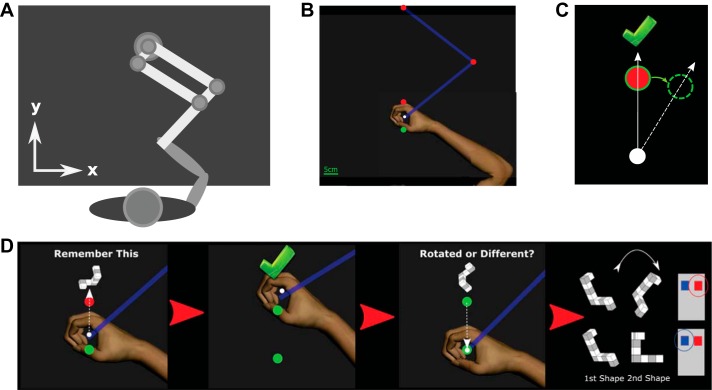Fig. 1.
Experimental design. A: subjects held the handle of the robotic manipulandum with their right hand, the position of the arm and handle was hidden from sight, and feedback was provided on a horizontal screen. B: subjects made “shooting” movements from a starting position (green circle) toward a target (red circle); after the initial practice trials the position of the cursor (white circle) was no longer visible at any point. C: successful trials were indicated to the subject with the display of a green tick after the cursor had passed through a region centered on the target; over the course of the paradigm the position of the reward region gradually moved (solid green circle to dashed green circle) while the visible target (red circle) remained in the central location. By the end of the learning period a successful reach (dotted white line) was rotated by a maximum of either 15° or 25°. D: time course of experiment 2: at the same time as the target appeared on screen, a “shape” was also displayed slightly above it; the subject was asked to memorize this shape. After the reach was completed and the hand returned to the starting position, subjects used their left hand to respond with a button press as to whether they believed the new shape shown on screen was a rotated version of the shape or an entirely different shape.

